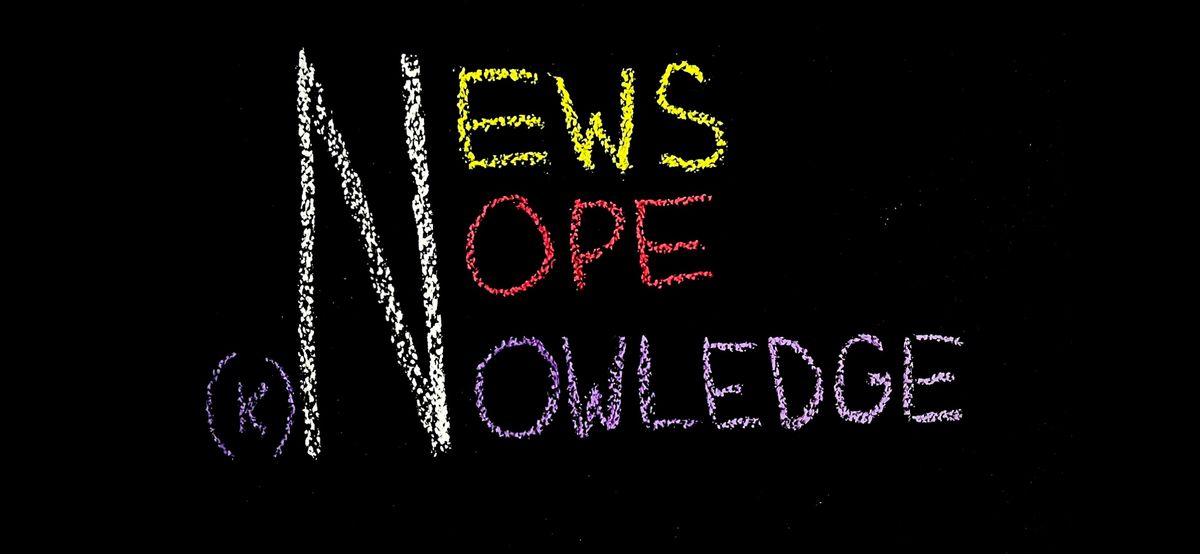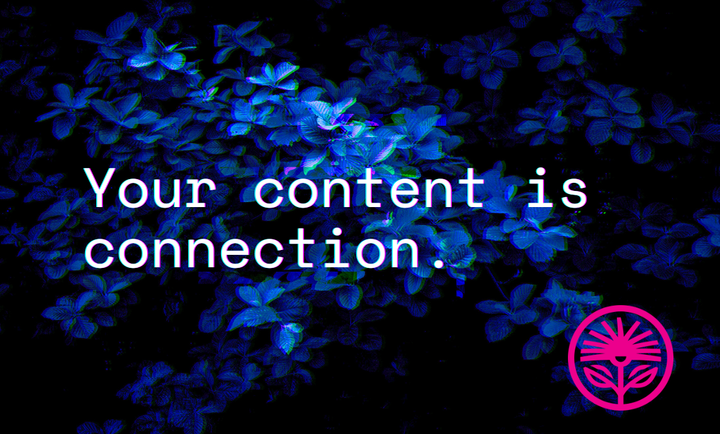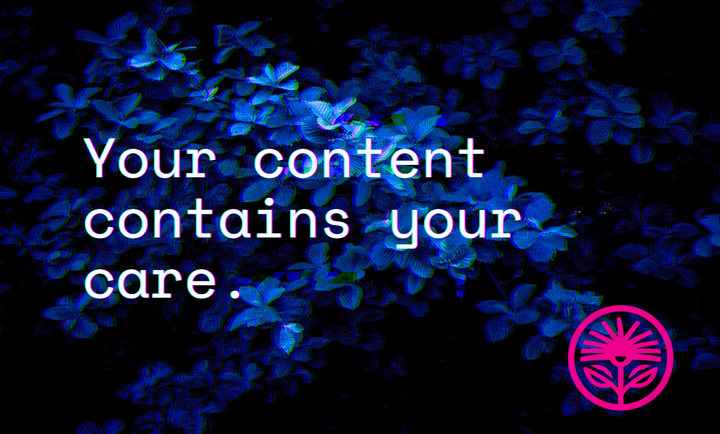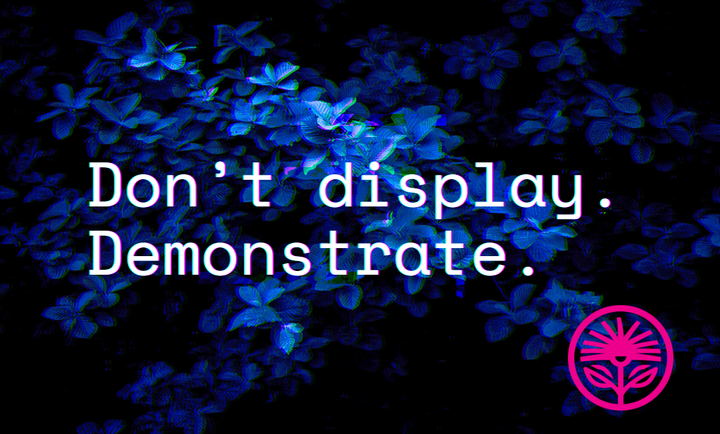Model: News, Nope, (K)Nowledge
There’s so much you can write down before you start writing, all of which gives you the structure to hang your ideas on—the frameworks with which to build out your content and communication.

When people tell me that they hate writing marketing content because they “don’t like staring at a blank screen,” I usually smile and pretend to understand.
But, most of the time, I’m thinking: “Why is the screen blank, then?”
There’s so much you can write down before you start writing, all of which gives you the structure to hang your ideas on—the frameworks with which to build out your content and communication.
There’s no need to ever have a blank screen for more than a moment, because you’re never starting from scratch.
If you need to write some form of content for your business, whether that’s a LinkedIn post, a brochure, a website, a trade show banner, a directory description, a paid ad, a video script, a conference presentation, or anything else, write this down first:
Who you’re communicating to: The one audience or individual whose attention actually matters (The buyer at the conference, the potential client you’re connected to on LinkedIn)
When they’re going to see or hear this message: What is the moment—in their life or business, not yours—in which they’ll experience your marketing? (Right after lunch at a boring trade show? On Tuesday morning while they’re checking their work email?)
What they’re interested in hearing about: The thing they already care about or need (The reason they’re at the conference, specific services, specialized software, your type of consulting, etc.)
How you can help with that: The tradeoffs you've made that ideally suit their specific interests or needs (You’re pricey but customized, you’re focused on their industry, you use innovative tools in an interesting way, etc.)
Where they’ll go next: They saw your message—now what? (Are you including a link? Handing out a sales sheet? Promoting an offer?)
That’s a lot for a blank screen to contend with—so much, in fact, that the screen is nowhere near blank, and your ideas are flowing.
Let’s make it even simpler, though, and introduce the “Three Ns of Content.”
Here’s what you do: Write down your Who, When, What, How, and Where, and then right below that, write these down as the titles of three columns on your page:
News, Nope, (K)Nowldge
NEWS
“On the average, ads with news are recalled by 22 per cent more people than ads without news.”
— David Ogilvy
News is, well, news. Maybe a new study was just published that reinforces the value of your company’s product design. Or an event in the world directly relates to your business or your expertise. Or maybe you’ve just launched a new product or service.
People are drawn to the new, as new things present new opportunities. We’re not inherently consumerist, we’re inherently curious. We buy things because we’re curious about how much they can help us.
And we pay attention to content because we’re curious about the new, and that new could be you.
When I post on LinkedIn promoting this newsletter and the fact that it contains a new model for content creation, that’ll be “News.”
NOPE
“I can’t think of any good books on how to make ads. Most of them are the unreadable in full pursuit of the unteachable.”
— Howard Gossage
“Nope” is the content that poses a captivating contradiction. Jokes fit that bill, as do ads that present a single story and then introduce a twist, and counter-positioning videos.
Contradictions are self-evidently surprising. We thought things were one way, and then they suddenly weren’t.
You’ve got to be careful here, though! Bait and switch promotions trigger reactance and spite, as do ads that insult or otherwise demean their intended audience.
So, instead of saying, “You thought x was true, but you were wrong, y is true. So buy z,” you say something closer to, “Lots of people think x is true, but people like you know that y is true—and that’s why we buy z.”
Directly contradicting someone’s belief only reinforces it, but providing a playful contradiction in language, like in a joke, grabs attention and sticks in the mind.
The quote above by Gossage makes a strong point about the pointlessness of trying to teach advertising, but because he phrased it in a funny way, we can ponder it without immediately rejecting it.
Try reinforcing a contradiction your ideal customer already believes: What does your audience wish there was less of, not need, or is tired of?
Most ads, promotions, and copy are about more, more, more—so simply giving permission for less, or demonstrating how your business does less to do better, can create a captivating juxtaposition with the competition and attract customers who want the sorts of tradeoffs you've made.
When I insisted above that there’s no such thing as a blank page, that was a form of “Nope.” And if, when I said that, you felt a little annoyed at my flippancy, that was me triggering your reactance.
(K)NOWLEDGE
“There is nothing better than a fact if you have a great one.”
— Mary Wells Lawrence
Close enough.
What I'm calling “Nowledge” are the facts about your business that are interesting and relevant to your ideal customer. They’re facts about the world, the industry, or anything else that grab attention and connect to what you do.
When you describe the inner workings of your process, that’s Nowledge. When you explain how global issues affect your industry, and connect that back to your expertise, that’s Nowledge. When you provide useful tips and tricks for your potential customers, that’s Nowledge.
People acquire resources by way of acquiring useful or valuable information. We crave it, and content that provides information that can be transformed into utility is inherently interesting.
When I told you that I never start with a blank page (and how you can avoid it, too), that was “Nowledge.”
In each column you’ve made on your page, all you need to do now is write down any ideas that come to you when you ponder your marketing position and any News in the world, industry, or your business that might relate. Do the same with Nope and Nowledge.
If your marketing position (your Who, When, What, How, Where) is clear, accurate, and extremely specific, the ideas will flow.
Because, with the Three Ns, you’re never starting with a blank screen—you’ve got built-in inspiration and a process to follow to keep the content flowing and keep iterating and improving, day by day.
As I always say, “Marketing doesn’t fail—it stops.” So the thing to do is keep it from stopping by never getting stuck on a blank page or an empty text field.
Are there other types of content that don’t fit these categories? Of course! Once you’ve exhausted everything here, there’s still a universe to explore.
But this is a good place to start.
So write out your position, write down the Three Ns.
And start writing.
Next week: A practical exercise with examples to integrate the Three Ns into your writing process.
Has your marketing been spinning round and round in circles, without a clear focus or direction?
Schedule an online Lab Session with Joel or Leah from Kelford Inc.
It's a no-commitment, low stakes way to move your marketing forward with tailored advice, just for you. 90 minute sessions start at $500 CAD.
Email us at labs@kelfordinc.com to let us know what's on your marketing mind and we'll set it up.
Stop spinning, and start demonstrating your value at a distance.



